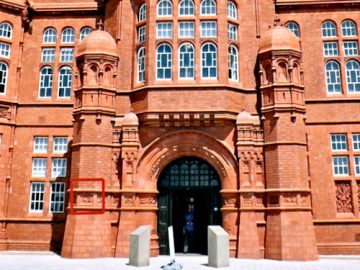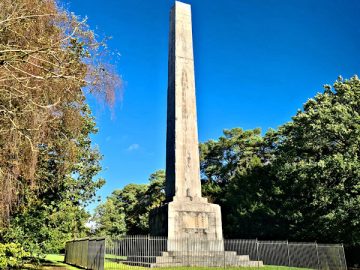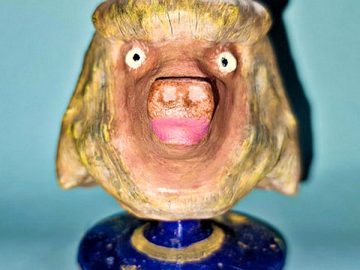The Roman Second Augustan Legion are famous in British history for many reasons, one being their big part in the invasion of southern England under the future Emperor Vespasian. And, of course, their shame for not arriving to battle Queen Boudica famously led to their acting commander having to commit suicide. But most of their time in Britain involved keeping the peace at various legionnary bases, with Caerleon in South Wales being a longstanding one from around 75AD, with them leaving around 300AD. And fortunately there are still some excellent remains of that Roman presence including of a wonderful late second century legionnary toilet block (a.k.a. a forica). Below is a photo so you can see what those ruins look like today.
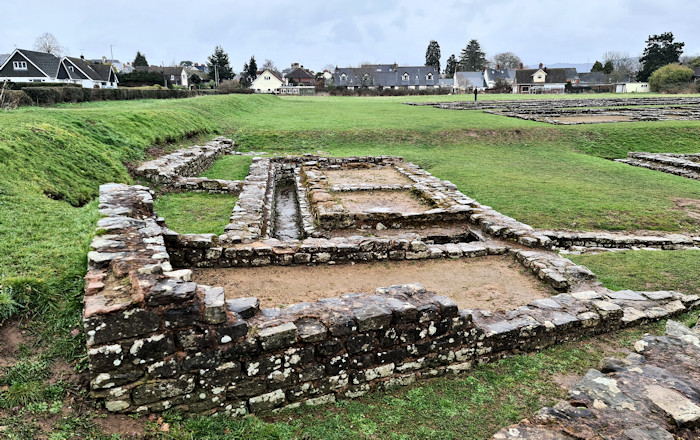
Quick summary of this 3D creation
Overview: A low-polygon 3D model of a late second century Roman legionnary toilet block.
Location: Caerleon Roman site, Caerleon, South Wales [map].
Date/era: Roman, late second century AD.
Software used: Kiri Engine, Meshmixer, Blender.
Intended use: Digital only (textured low-polygon).
Related posts: Caerleon amphitheatre Nemesis shrine, Caerleon holding pen and steps.
Download: Sketchfab page (non-commercial license).
So armed with my Android smartphone and the excellent Kiri Engine photogrammetry app I decided to make a 3D model of the toilet block. Kiri Engine was a good choice for this as I specifically wanted a well-textured low-polygon model to let people appreciate how exciting a site Caerleon is, but without long waits for it to download. So I took 107 12 mega-pixel photos all around the toilet block, from different heights and angles. Then, after the photos were processed at the Kiri Engine website, I extracted the low-polygon model from their results. And below you can interact with it on Sketchfab (click the play button to load the model and view it in 3D).
The model, after a little trimming in Meshmixer, ended up with 21579 vertices and 7193 triangles. So it’s pretty lightweight in terms of file size and bandwidth requirements for web use. After trimming I also adjusted the scale in Blender to approximately fit with a few key measurements I took using my Bosch laser distance meter. And overall I was pretty happy with the result as it can easily be used by anyone wanting to learn more about this amazing Roman legionnary site which is considered one of the best remains outside Italy. And if you want to see how it could have looked in Roman times, here’s a photo from the CADW information sign.
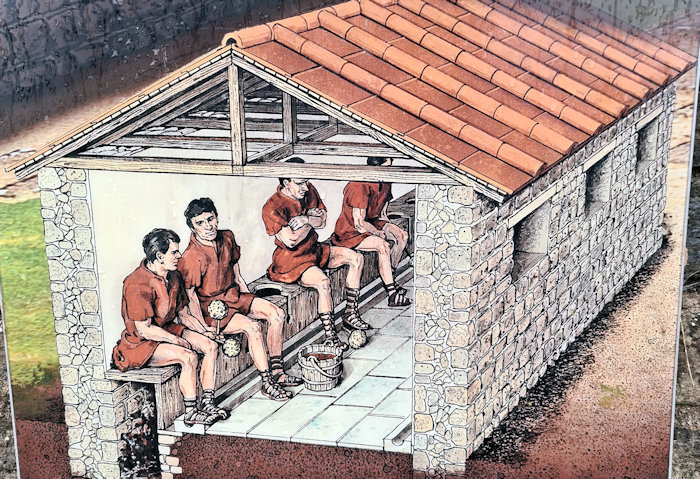
And that’s all I need say about the toilet habits of Roman legionnary soldiers! I hope you find the scan useful and, above all, interesting 🙂

